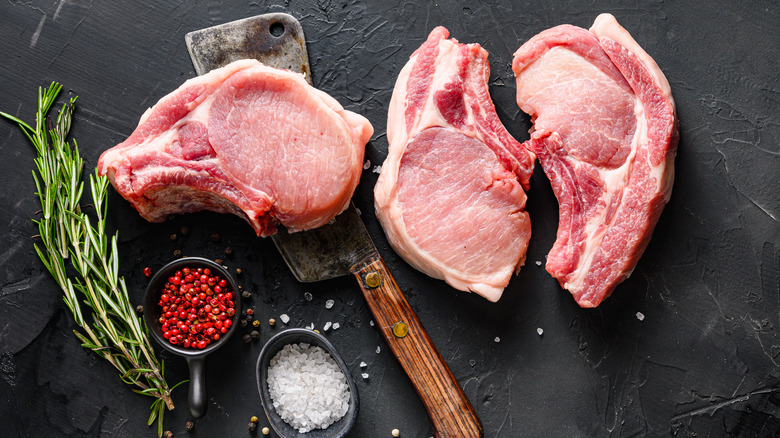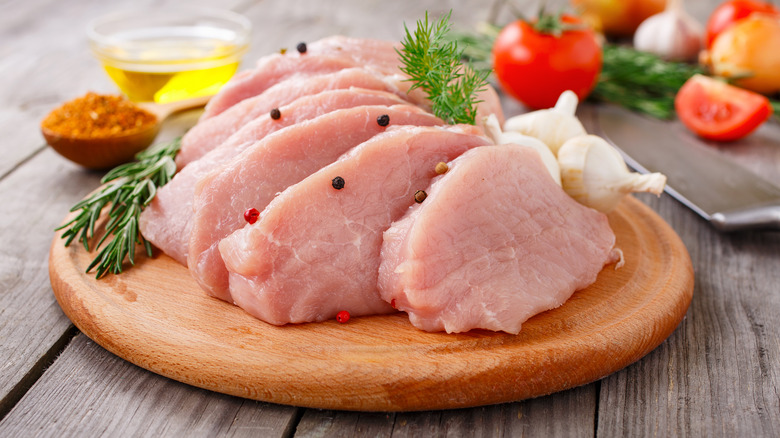Should You Get Bone-In Or Boneless Pork Chops?
Ah yes, the age-old cultural debates: Rolling Stones vs. The Beatles; Star Wars vs. Star Trek; and bone-in pork chops vs. boneless pork chops. Okay, maybe pork chops aren't up there with the others, but we can at least admit that a butcher shop and the decisions you have to make there can feel pretty intimidating. When it's time to figure out what's for dinner, there are enough hard questions being asked. Can't we just leave the bones out of it? Alas, whether or not you decide on a boneless or bone-in pork chop does make a difference in your meal, and could be the make or break decision depending on what you need.
The pork chop is a cut of meat between an inch or an inch and a half thick, which usually comes from the loin (via The Kitchn). That's the section of the pig that runs from the shoulder to the hip along the animal's back. A butcher can take the shoulder, rib, loin, or sirloin chops from this section of meat. The Kitchn notes that each of these cuts has different properties, and will cook differently. A boneless pork chop is typically taken from a part of the loin chop or a rib chop that has had the bone removed. Both bone-in and boneless pork chops are fine options for anyone looking for a reliable piece of fairly lean meat, but both have their pros and cons as well.
Boneless pork chops are a quick, consistent option
According to Wagyu Shop, the boneless pork chop is a great cut of lean meat that will cook quickly, and consistently. They note that while some tout the flavor of the bone-in pork chop, the difference may be negligible for most diners. Many who prefer bone-in pork chops say that the bone and extra fat on a bone-in pork chop gives the meat a juicier, richer flavor. The bone also provides more connective tissue and better structure to the meat. Coleman Natural Foods notes that a boneless pork chop can tend to dry out or overcook because it usually has less fat present. The bone-in pork chop on the other hand cooks slower and has a juicier flavor because of the extra fat.
Coleman also gives more points to the bone-in pork chop for presentation. They note that keeping the bone on looks like it took the expertise of a professional chef. This is further enhanced when part of the bone has been "Frenched," or partially exposed, by a butcher.
At the end of the day, it comes down to preference. A boneless pork chop is going to be leaner, easier to find and often cook quicker. They're a great choice if you don't have time to wait in line at a butcher's or need dinner on the table in a hurry. Bone-in chops on the other hand may provide more flavor and can serve as a showstopper when presented correctly.

